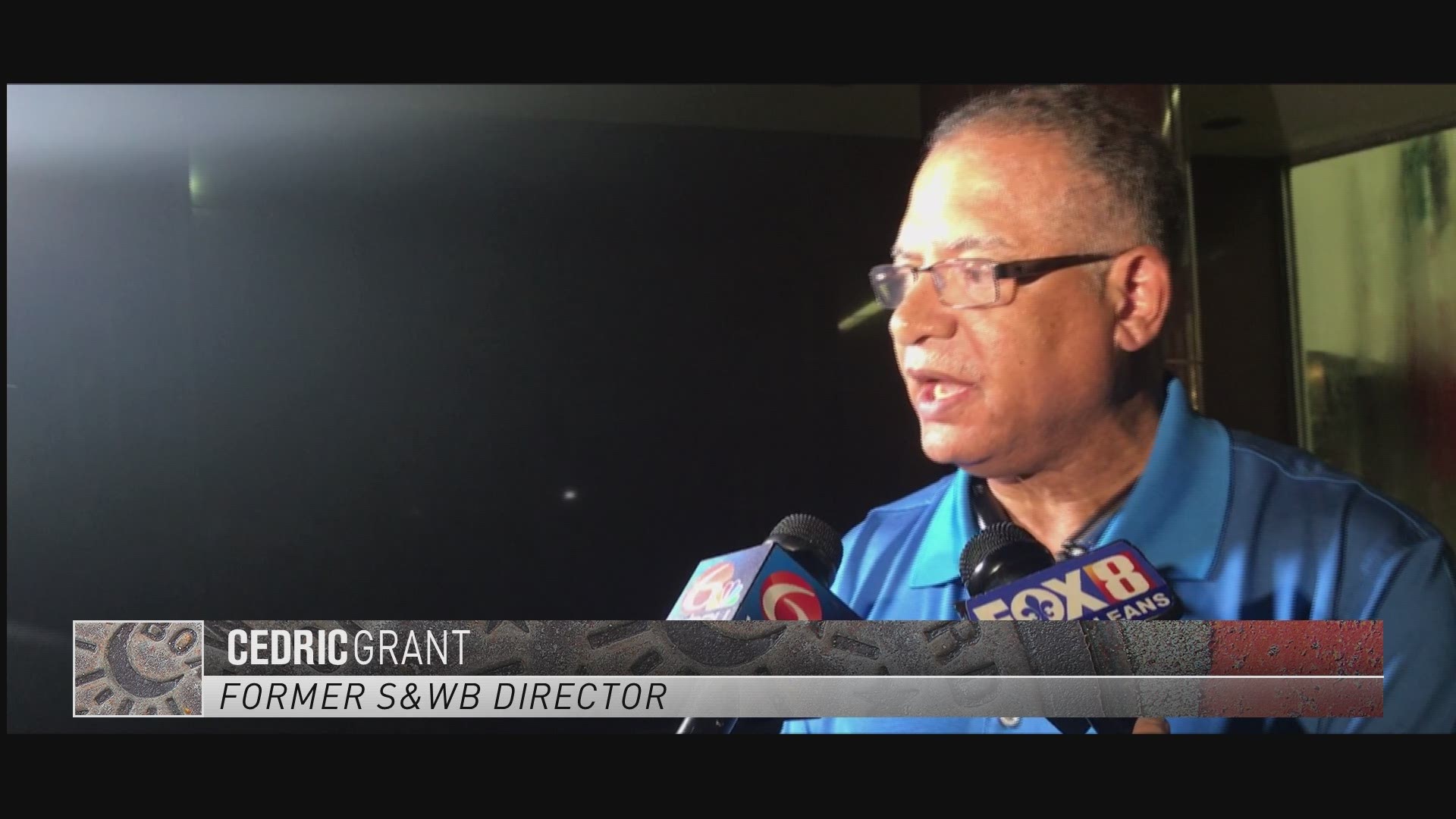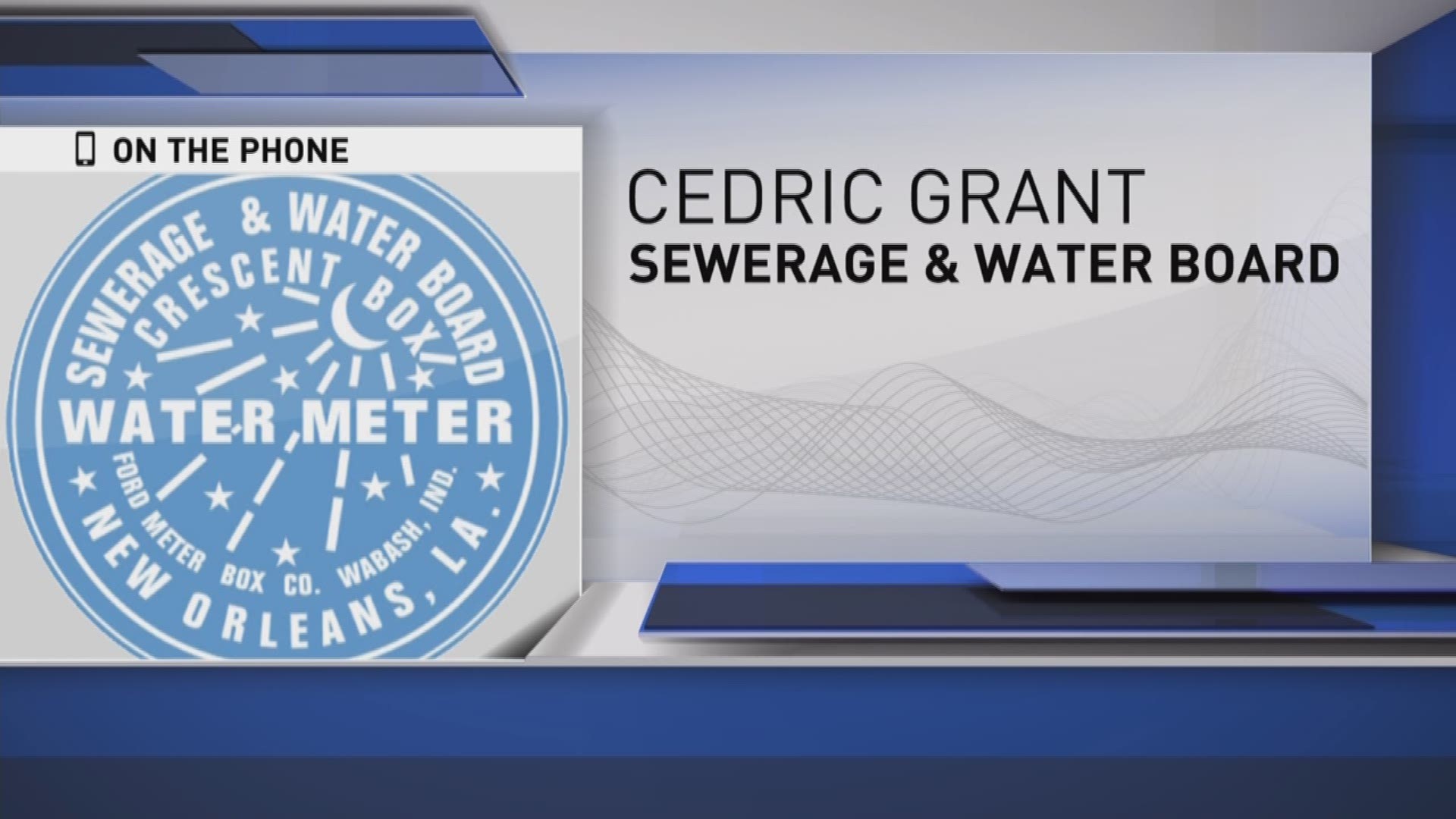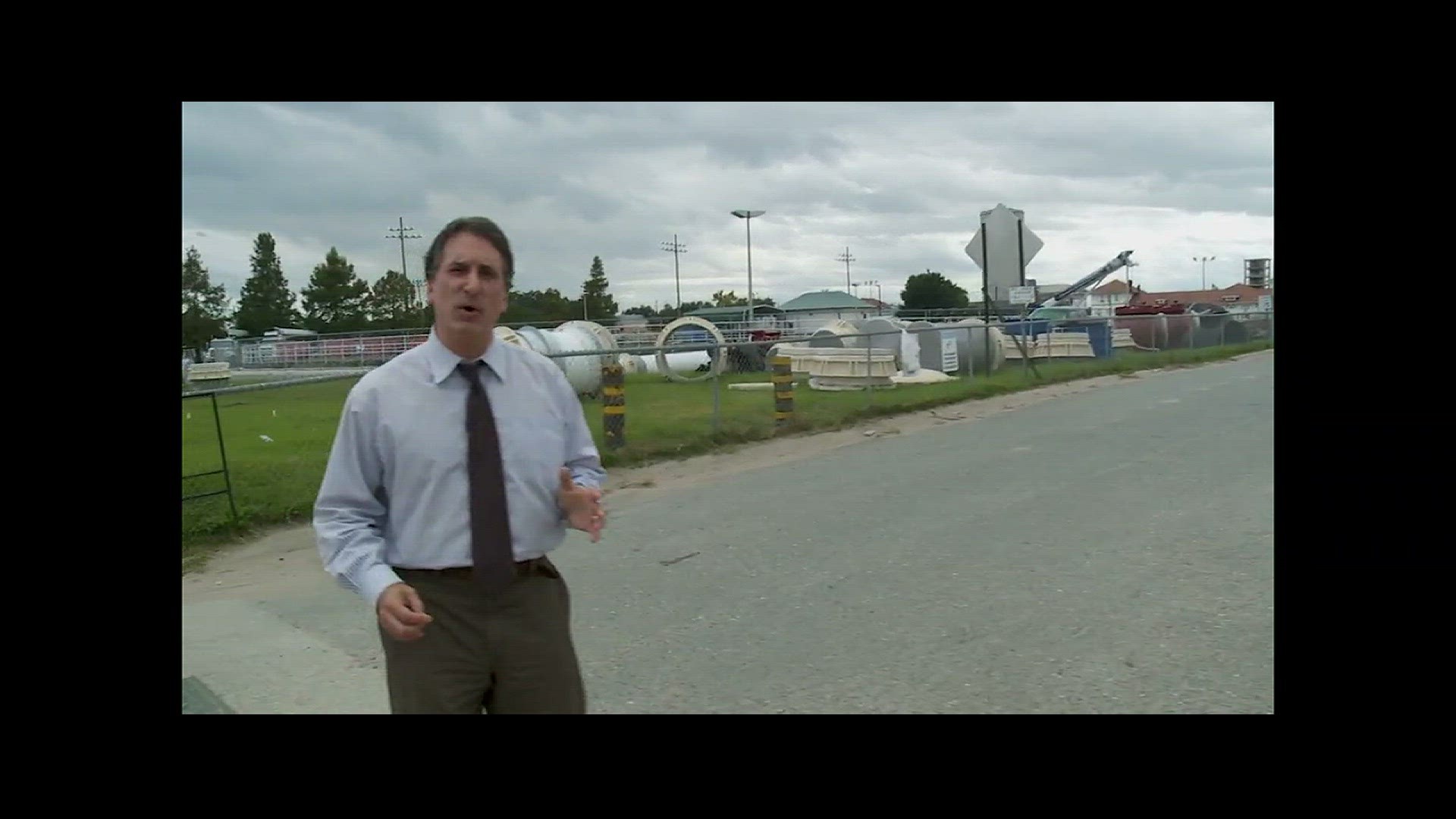Down the Drain is a WWL-TV investigative project that explores what went wrong and where the blame lies for New Orleans' drainage crisis. Down the Drain was reported and produced by WWL-TV's investigative team: Katie Moore, David Hammer, Mike Perlstein, TJ Pipitone and Danny Monteverde. Infographics and multimedia design by Sam Winstrom and Kevin Dupuy.
NEW ORLEANS -- In New Orleans, it has become an old adage: The pumps can handle an inch of rain the first hour, half-an-inch every hour after that.
Everyone from mayors to meteorologists has parroted that capacity assessment of the New Orleans drainage system during the decades, but some of the million-dollar studies completed for the city and the Sewerage & Water Board indicate that old adage may be nothing more than a myth.
In 2010, shortly after taking office, Mayor Mitch Landrieu appeared on WWL-TV after a bout of street flooding.
"From very early this morning, they were on and operating at full capacity. They are engineered to deal with one inch of water an hour,” Landrieu said.
After several feet of flood water inundated New Orleans on Aug. 5 of this year, S&WB officials repeated it again.
“I'm frustrated from the standpoint of, I continue to tell people what this pumping system can do. It's pretty amazing in that it can do one inch of rain the first hour and a half-an-inch of rain every hour after that,” said former S&WB Executive Director Cedric Grant in an appearance on WWL-TV’s Eyewitness News the night of the Aug. 5 flood.
But 23 days later, when residents were stuck on the neutral ground along Orleans Avenue for hours and some reported flood water rising as the rainfall slowed, Landrieu began to question the “one inch in the first hour” assessment.
“It has been repeated more times than I can remember that everybody knows that we can do one inch the first hour and half-an-inch thereafter. I haven't seen any evidence of that. And I'm questioning everything now,” Landrieu said.
At the heart of the issue is how much rainfall the pumps can push out of the city to Lake Pontchartrain and the Industrial Canal and how much water the canals and pipes can hold until the pumps fire up.
The so-called design capacity, the amount of water the S&WB system was designed to pump is 50,891 cubic feet of water per second. That’s more than 380,000 gallons.

To put that in perspective, if you filled up the Superdome with water, the S&WB pumps are designed to pump more than that in one hour, but the U.S. Geological Survey rain calculator estimates one inch of rain falling over the entire city, 169 square miles, is nearly 3 billion gallons of water.
Pumping capacity is only part of what goes into determining how much rain the system can handle.
Only a fraction of the rain that falls from the sky ends up running off into the drainage system. How much depends on the amount of land that is covered by impervious surfaces, such as buildings and concrete, and how much of it goes into existing bodies of water, such as Lake Pontchartrain.
How much can the New Orleans drainage system really handle?
A number of the city’s drainage pumps are regularly out of service.
Since Hurricane Katrina, the S&WB has paid consulting firm Black and Veatch $1,169,000 to give the board a report on operations. Every year, those reports have said 10-15 out of 120 pumps are down for maintenance.
For the first time, the public heard former S&WB Superintendent Joe Becker admit as much when questioned about it after the Aug. 5 flooding.
“There are always pumps that are down for maintenance,” he
Are the pumps in your neighborhood working?
Even if the pumping system could handle an inch of rain the first hour when the pumps are all working, they rarely are.
We dug through the S&WB work orders for repairs, and found thousands of the work orders at the pump stations were never closed out, an indication they were never completed.
Those incomplete repairs range from small things, like broken locks on the front door of the city's largest pump station, Pump Station No. 6. Work orders indicate the locks were reported broken in March of 2015 and again five months later.
Those locks are currently working, but when they were repaired is unclear. The S&WB says a clerical error is likely to blame for the lack of documentation about the repair.
But more significant are the repairs to pumps themselves, some of which appear to get backlogged.
The thousands of work orders are typically for more minor maintenance issues. The larger repairs, such as when pumps’ motors have to be rewound, typically go out for bid, a process which can take months.
“In one situation, a pump at my station was out for 18 months because they could not get enough people to bid on it. And once they actually awarded the contract to somebody, it was actually awarded in under a month,” said Darrell Hayward, a pump station operator at Pump Station No. 7 in City Park. He was called in to work the night of the Aug. 5 flood.
Hayward is referring to a contract to “rewind” four key pumps at Drainage Pump Stations Nos. 6 and 7. Contract delays left those pumps down and those stations largely handicapped for the 2017 hurricane season.
In fact, two of the pumps included in that contract that work during dry weather to get rid of runoff from parts of Orleans and Jefferson Parishes at Drainage Pump Station No. 6 have been down for five years.
While they are much smaller than the drainage pumps, they allow the S&WB to pump down the level of the interior canals so they can hold more runoff in anticipation of heavy rain. Without them, the water level in the Palmetto and Monticello canals remains around 8 feet.
Diminished capacity?
Just like the power-generating turbines at its power plant, some of the city’s pumps are more than 100 years old.
A specialist in hydrology who is familiar with storm water drainage and pumping, but asked us not to use his name said, “The original capacity of the pumps will have changed. Some will be diminished, others have been upgraded and have more capacity.”
But we could find no record of anyone doing a detailed study of how much water the pumps can really move.
“Veolia is actually in the process of doing that now,” Hayward said. "They were at my pumping station a couple of weeks ago when it rained to go ahead and measure."
Veolia is a national company that received an emergency contract to do a comprehensive system needs assessment after the Aug. 5 flood.
Other recent studies, including the Storm Water Capital Improvement Plan, completed in 2012 by CDM Smith and the Greater New Orleans Urban Water Plan predict significant flooding for as much as two inches of rain in an hour, even if the city’s pipes weren’t crumbling, its canals were cleared of all vegetation and debris, and its pumps were working as well as they were designed to work 100 years ago.
In fact, the capital improvement plan estimates hundreds of miles of streets would have more than six inches of water in them if the two-and-a-half inches of rain poured on the city in an hour.
And forecast probability models indicate the city has a 50-50 chance that will happen every year.
To watch the full Down the Drain special click here.



